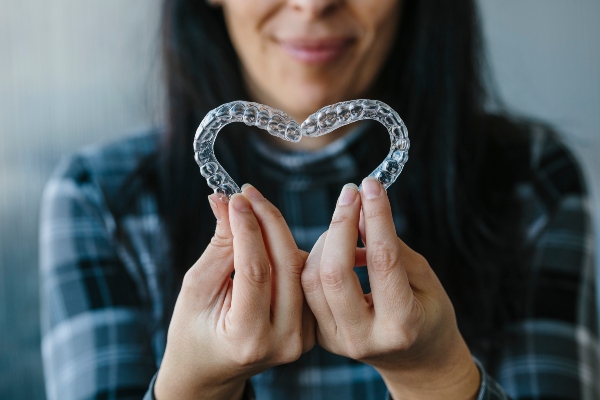 Orthodontics takes commitment and patience on the part of the patient and their dentist. The process requires you to invest your time, mental energy, and money in the quest for an improved smile. The good news is that your investment can pay off in a big way. Your oral health can improve, your confidence can skyrocket, and your teeth can function better.
Orthodontics takes commitment and patience on the part of the patient and their dentist. The process requires you to invest your time, mental energy, and money in the quest for an improved smile. The good news is that your investment can pay off in a big way. Your oral health can improve, your confidence can skyrocket, and your teeth can function better.
Still, the process that is orthodontics treatment can be daunting. This list of FAQs can give you an idea of what to expect from the treatment. Read on to find out the answers to common questions about orthodontics.
Why some patients need orthodontics
The goal of orthodontic treatment is to move the teeth and jaws into optimal alignment. Here is what optimal alignment looks like:
- Teeth that are free from crowding and overlapping
- Straight teeth that all face outward as opposed to being angled to each other
- A perfect bite that is free from an overbite, underbite, or crossbite
- Jaws that are in proportion to each other and the rest of the face
These are the qualities of a healthy smile and a healthy mouth. They translate to a functional set of teeth that also happen to be aesthetically pleasing.
Orthodontic treatments also have preventative qualities. Children who undergo orthodontic treatment at an early age can have serious oral health issues stopped in their early stages. This can improve the child’s quality of life in the long term.
1. What is the process of orthodontic treatment?
It starts with a consultation between the patient and the dentist. This consultation often involves a visual exam and a read-through of the patient’s dental records. The consultation may also include medical imaging that allows the dentist to form a definitive diagnosis.
Next, the dentist will use the diagnosis to craft a treatment plan that will correct the patient’s particular issue. Usually, the treatment involves dental appliances like braces and clear aligners. More severe cases may require the use of appliances that reshape the jaw.
Once treatment is started, the dentist will monitor their patient’s progress with periodic checkups. They will make adjustments to the patient’s orthodontic appliance along the way.
2. How long does the treatment take from start to finish?
It depends on the nature and severity of a patient’s condition. Slight crowding can resolve in a year, with a few extra months for a retainer to do its job. However, serious issues could take a few years to correct.
3. What is the role of a retainer in orthodontic treatment?
The teeth and jaws are living tissue, which makes them somewhat elastic. If a patient straightens their teeth and fails to wear a retainer after their braces come off, the teeth will slowly revert to their old positions, like a slow-motion rubber band. This is why dentists encourage their patients to wear a retainer until the teeth and jaws completely settle into their new arrangement.
4. Who performs the orthodontic treatment?
The general dentist offers first-line dental health care, which means that they are the ones who usually detect and diagnose orthodontic problems. A general dentist with training and experience in orthodontics can treat straightforward cases.
5. What are the chances of a relapse?
Relapse odds are incredibly low if a patient exercises patience and discipline. A dentist with the requisite skill and experience will craft a treatment plan for a good long-term outcome that is also permanent. The dentist will employ every resource at their disposal to ensure this outcome.
6. What is the ideal age for orthodontics treatment?
Children can benefit from the timely correction of their orthodontic problems. That said, the emergence of discreet devices like tooth-colored braces and clear aligners make it easier for adults to improve their smile. It is never too late to improve the appearance and function of the teeth.
Find out how orthodontic treatment can meet your unique needs
Everybody deserves a healthy smile that looks and feels great. Get in touch to find out how orthodontics can deliver a smile that you can be proud of. Our dentist would be happy to work out a treatment plan that fits your needs.
Request an appointment or call Trielle Orthodontics at 908-344-3388 for an appointment in our Union office.
Related Posts
Orthodontics can be used to treat a variety of teeth alignment issues, like a crossbite or crooked teeth. The alignment of a person’s teeth plays an important role when it comes to their oral and overall health. A person has a bad bite when some or all of their teeth do not come together as…
Orthodontics typically involves wearing oral appliances like braces or clear aligners in order to straighten teeth. These devices work by constantly pushing on the wearer’s teeth, moving them to more desirable positions over time. Teeth misalignment can lead to a less aesthetically pleasing smile and a variety of oral issues, like gum disease. Getting appropriate…
Oral hygiene is vital when you are straightening your teeth with orthodontics. Oral appliances used to straighten teeth like braces and clear aligners can get in the way of oral hygiene. These appliances, braces in particular, can also increase your risk of oral issues like tooth decay.The oral appliances used to straighten teeth can increase…
